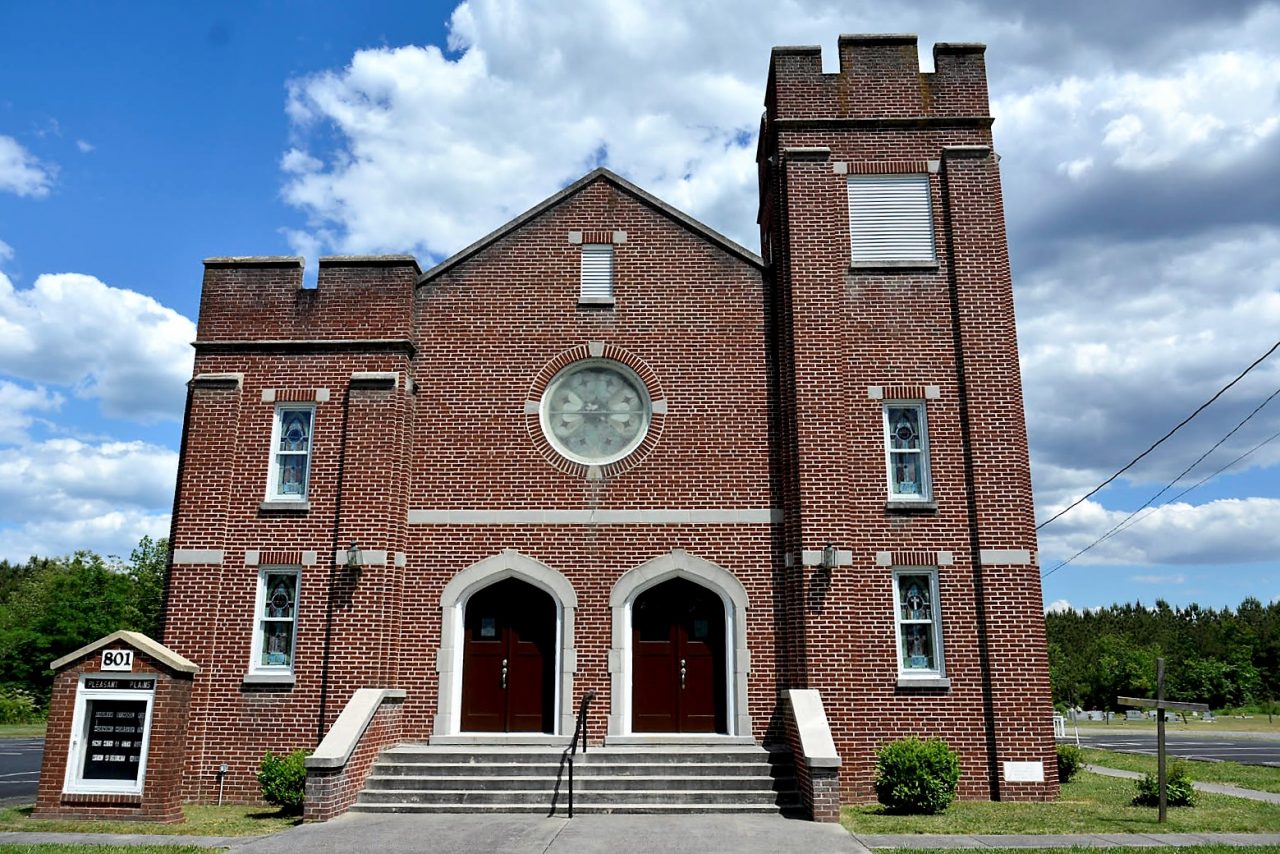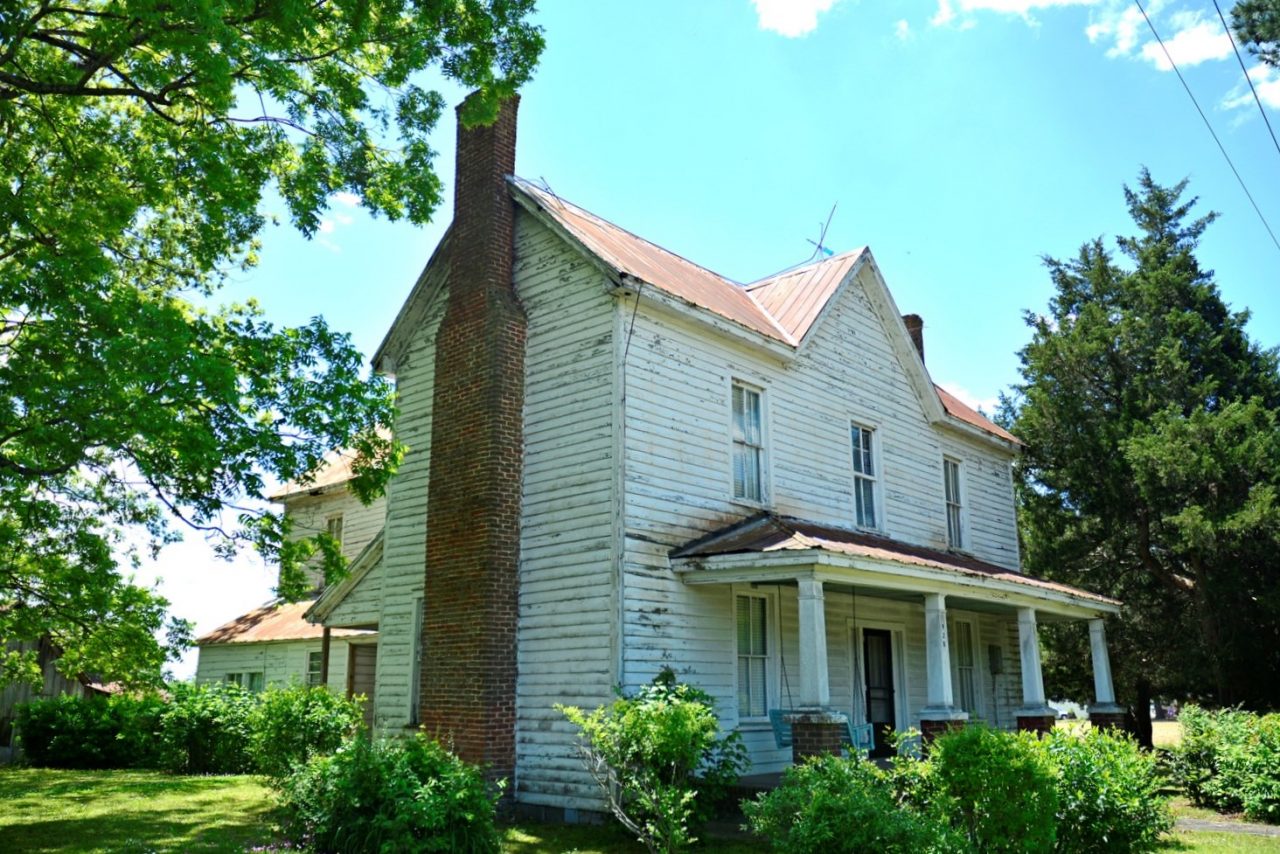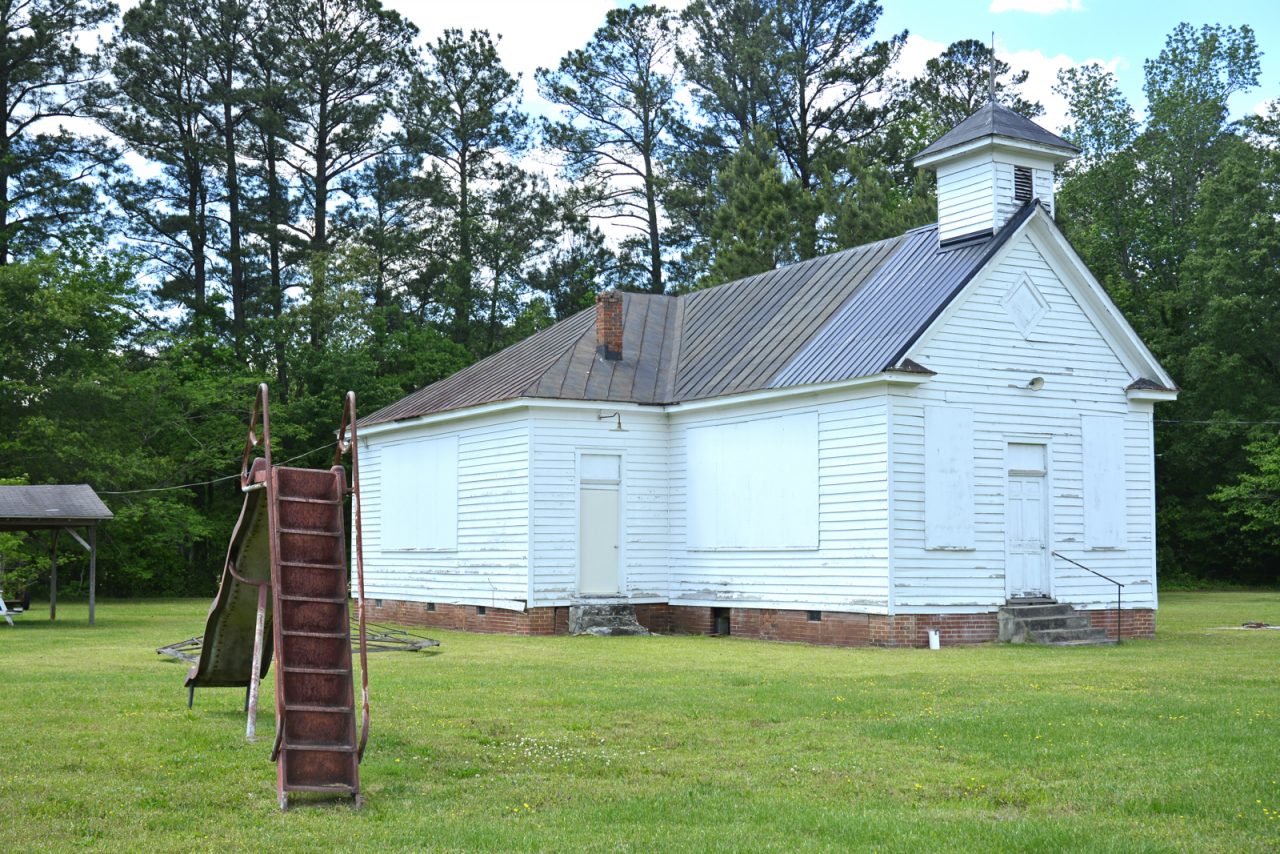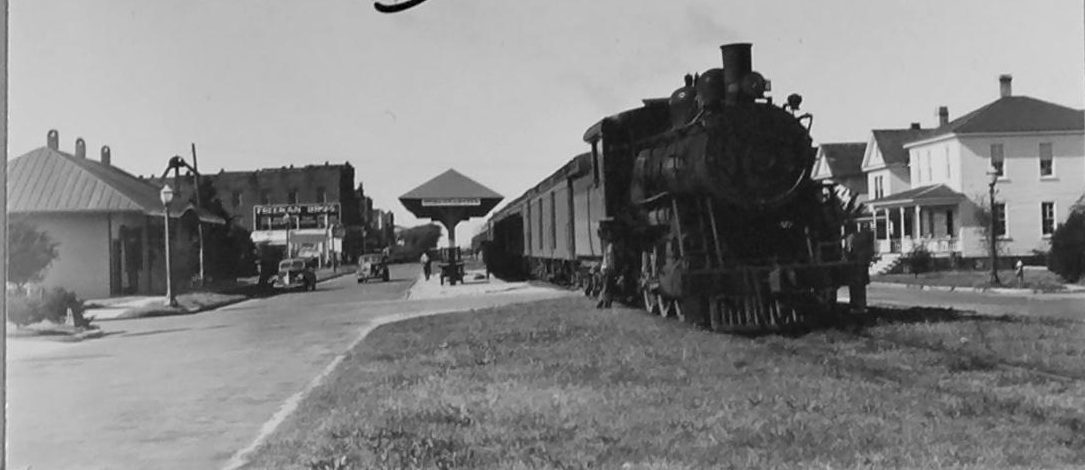
NORTHEASTERN NORTH CAROLINA — In 1845, North Carolina passed a law prohibiting free people of color from selling liquor. Fourteen years later, the law was expanded banning the sale of liquor to “… any free person of color, for cash, or in exchange for articles delivered, or upon any consideration whatever, or as a gift …”
Almost immediately, 55 white men from Hertford County requested an exemption. There does not seem to be a record of why the exemption was requested, but in his University of North Carolina Chapel Hill 2012 doctoral dissertation, Warren Milteer points out that “by 1860, approximately 1,000 free people of color resided in Hertford County, giving the county one of the largest free non-white populations in the state.”
Supporter Spotlight
The law, specifically calling out free people of color, highlights how complex the story of race in America is.
Not every person of color in the South was enslaved.
It is a point Marvin Tupper Jones, the executive director of the nonprofit volunteer preservation and research organization Chowan Discovery Group, explains in detail. A native of what he describes as the Winton Triangle in Hertford County, Jones traces his heritage to the late 17th century.

“My oldest named ancestor was from India. William Weaver shows up around 1690,” he told Coastal Review. Weaver was the father of biracial children who were free.
“These were not enslaved people,” he said.
Supporter Spotlight
Citing the late Dr. Ira Berlin, a scholar and historian who studied slavery and race in America, Jones said that at the time it was not uncommon for European men and women to have children with partners of a different race. A professor of history at the University of Maryland, Berlin died in 2018. His books and research are widely credited with changing perceptions of the Black experience in Colonial and antebellum America.
Basing his observations of how multiracial families became a part of the American experience, Jones referenced Berlin’s work.
“He wrote that a great deal of indentured women from the British Isles mated with men of color, Indian, African. Most mixed-race children in the 1700s, had British mothers and grandmothers,” he said.
The Winton Triangle is not a large area. Its boundaries, according to Jones, are the towns of Winton, Ahoskie and Cofield. It was at one time home to the Choanaoc Native Americans and the principal village of the tribe was reported to have had as many as 1,000 people living there. The Chowan River takes its name from the tribe and along the banks of the river a remarkable biracial community took root. A community that managed to grow and even thrive despite remarkable legal and social barriers that stood in its way.
“I always knew we grew up in a special area. We had all these businesses. We had a certain insulation from racism,” Jones said. “We had very good teachers, were proud of our teachers. We just had experiences that we didn’t see in other Black communities. We looked different.”
For Jones, the story of the Winton Triangle has become a personal journey of discovery; a search for answers to why a community of color tucked away in a rural county in northeastern North Carolina produced people of extraordinary professional accomplishment — college presidents and doctors.
“I realized that what I continued to find deserved more documentation. And so, I set out to find out what the differences are,” he said.
In the late 17th and early 18th centuries, the border between Virginia and North Carolina was indefinite and a small community had taken root just south of the Virginia Colony line along the Chowan River.
It is possible that the multiracial peoples who first came to the area had little choice but to flee. Virginia in 1661 passed its first law prohibiting interracial marriage. In 1691, the Virginia House of Burgesses went further, requiring any woman who gave birth to a multiracial child to pay a fine or face five years of indentured servitude for herself and 30 years for her child.
At that time, there were no miscegenation laws in the proprietary Colony of North Carolina, creating a safe haven along the banks of the Chowan River.
Hertford’s multiracial community grew and was actively involved in county life. According to “The History of Negro Suffrage in the South” by Stephen Weeks, published in 1894 for the Political Science Quarterly, in 1833 there were 150 multiracial voters on the roles in Hertford County. Two years later that changed. By a vote of 66-61 the right to vote in the state of North Carolina was restricted to white men only.
Yet the multiracial population of the county continued to thrive.
“They had skills — farming, construction, fishing, barrel making, blacksmithing — you name it,” Jones said.
And the population was well educated, attending, as Jones described it, an antebellum version of integrated schools.
“They were able to go to school, believe it or not. The schools were based on fees. And if you’re a teacher, you need to have enough students, so you might have teachers that took in students of color, just so they can exist,” he said.
But the full story of the Winton Triangle was one of racial inequities and the Civil War was an important building block in telling the tale.
“I needed to know Civil War history. The Civil War has provided a whole lot of documents. We didn’t even know we had a role in the Civil War,” Jones said.
Winton holds a unique distinction in the Civil War; it was the first town in the war put to the torch by Union forces. On Feb. 20, 1862, a Union infantry regiment, the 9th New York Volunteers, supported by eight gunships, attacked the small river port after taking fire the day before from Confederate forces.
As the Union flotilla arrived at 8 a.m. that day, the southern forces withdrew, as did most of the about 300 town residents.
When the soldiers took possession of the town, they burned any building that had housed the Confederate soldiers who had fired on them, which was almost every structure in the village.
The town was reduced to smoldering ash.
The burning of the town is generally considered of no military value and an unwarranted act. For Jones, though, there is more to the story.
“All we knew was that the Union burned Winton. And we were somehow to feel bad about the that. Well, the burning of Winton was actually liberation day. The day the Union guns showed up was the day you could walk out with a soldier and be free,” he said. “You could get out to one of those gunboats and enlist. And we had a lot of men who did.”
At the edge of a farmer’s field by the side of a highway, Jones pointed to the headstones of a husband and wife.
“There were three farmers, all lived next to each other. Two of them served in the same regiment. This is the grave of Martin Van Buren Reynolds who was in 2nd Cavalry Regiment,” Jones said.
After the Civil War
After the Civil War, as returning veterans came home, Winton’s multiracial community became a more influential part of the county. The literacy gained in antebellum schooling provided an unanticipated benefit.
“The more literate you were, the more likely you were to get a pension,” Jones explained. “And the more likely to not be tricked out of your signing bonus. You could take that $300 and get a good start on buying land. You had large landowners who had no money after the war and you had soldiers who had pensions. Winton Triangle soldiers already had family members that owned land and could advise or help set them up or work with them on farming.”
Coming home to the Winton Triangle, soldiers were returning to a new reality of rising legal obstacles. Although supposedly free, southern states, including North Carolina, passed Black codes, laws specifically enacted to restrict the rights of people of color.
The North Carolina 1866 law, according to North Carolina Historic Sites, “… denied the rights of citizenship to free blacks and the recently emancipated. The code also placed restrictions on free movement within and outside the state, made it difficult for blacks to purchase and carry firearms, and prohibited interracial marriages.”
The returning soldiers, apparently, had a different view of whether they were allowed to retain their firearms.
“You had soldiers returning from the war. There was an attempt to take their weapons away from them by the Confederates, who had lost the war,” Jones said. “It’s in a Freedmen’s Bureau complaint.”
The backlash to the Black codes was swift in a Congress dominated by northern politicians with little sympathy for the southern whites.
The Reconstruction Act of 1867 was remarkable for the freedom it afforded people of color. Now permitted to vote and hold office, the first post-war North Carolina state legislature of 1868 had 20 people of color among its members.
For the Hertford community, it allowed them a say in political life for the first time in more than a generation, and it created the seeds of an economic and social renaissance.
“Reconstruction allowed people to get elected. It allowed people to have businesses. It allowed folks to have churches and schools,” Jones said. “Reconstruction, allowed this neighborhood to do even more for itself. We began having stores and schools and churches.”
It was also the time when southern Historic Black Colleges and Universities, or HBCUs, were founded.
“You had the rise of HBCUs, the Hampton Institute (Hampton Normal School initially), Hampton University, and Shaw University, in particular. So you could get a good education and you can get a higher education,” Jones said.
“Parker Robbins’s brother, who also served in the USCT (United States Colored Troops) … his son became a physician. He finished Shaw medical school. Shaw had a medical school then. And so within 30 years of the Civil War, you had Black doctors being trained in the South. Actually within 10 years because the Howard University Medical School was founded a few years (two) after the war,” he added.
Yet even as the Winton Triangle community was growing its opportunities, there were forces working to limit the options for people of color.
Reconstruction was a short-lived era. Two years after the 1868 legislature, political alliances had shifted in the state. Although the legislature still had Black representatives, the power of conservative white voters was on the rise. Court challenges to the 1867 law and rising white supremacist violence further eroded the political gains and power of people of color.
By 1877, the Reconstruction era in American history ended. Already weakened by the court challenges, a compromise with southern politicians in Congress allowed Rutherford B. Hayes to be certified as president of the United States. The key component to the agreement was that federal troops would be withdrawn from southern states. Without the troops to oversee elections and prevent violence against Blacks, attacks on people of color became endemic.
Perhaps no single act in North Carolina history illustrates the extent to which white supremacists were willing to go than the 1898 Wilmington race riot. The riot, led by former Confederate officer Alfred Moore Waddell, killed 14 Black citizens of the city and forced the legally elected Black city council to resign.
The effects of that riot were felt beyond Wilmington, Jones said.
“In 1898 the same year and the same time as the Wilmington race riot, word got out in the morning of the election in Winton, that a lot of people of color were voting, and the guns came out. So people of color stopped voting that afternoon in Winton,” he said.
Although access to the voting booth had been taken from them, what the multiracial community of the Winton Triangle did have was land. Much of that land is still owned and farmed by the families with roots in the area.
The Land and its Value

The land represented more than soil to be cultivated; it also represented wealth.
The William Reid house is a rambling two-story building. It’s hard to exactly describe its architectural style. The home facing the road has a porch with four columns and a dormer roof. The back of the house is at least as large as the front. The second floor attaches directly to the front. There is a wraparound porch that wraps all the way around the first floor, including a covered area underneath the second floor.
“The William Reid house is the largest in the Winton Triangle and may rival other Hertford County homes built in the 19th and 20th century. The Reid farm also had at least four barns and sheds,” Jones said. “My cousin told me that Bill Reid, his sons and a skilled Winton Triangle carpenter, John Mountain, built the house around 1910.”
The house, with its many rooms was probably needed for the family.
“Bill’s son, Otis, took over the house while his older sons lived nearby. Otis and my great-aunt Martha had 14 children,” he said.
There are other signs of the wealth of the multiracial community. What has become the Atlantic District Fairgrounds was built in 1920. Now largely unused, it is part of the Ahoskie East End Historic District. In its day, though it was an important part of the community.
“In Ahoskie, we (the Winton Triangle community) founded a fairground. It had an educational component. Wednesday was education day,” Jones said. “You could enter in your skills. The queen of the fair was who demonstrated the best home economic skills. Kids could show off their livestock and compete for prizes or anything else. Woodworking skills, poetry, you name it. You could put them on display. In an abandoned store, I found papers where people were being paid for their prizes for their canned foods and everything as early as 1922. I knew some of the prize winners.”
Just south of Winton, along U.S. 13, the Pleasant Plains Baptist Church is a striking brick building. Just to the south of it is a cemetery where some of the most prominent names of the Winton Triangle mixed race community are buried.
The church, founded in 1851, is one of the oldest Black congregation churches in the state.
In 1959, the Ahoskie Herald, writing in a special Milestone Year edition, wrote about the founding of the church, noting that the Free Colored Baptist Church worshipping at Pleasant Plains, as it was initially called, was organized and overseen by white pastors. It was not until 1881, when the Rev. T.M. Collins became the church minister that things began to change.
“Collins was the first colored minister to serve Pleasant Plains,” the Herald reported.
As the 1951 centennial of the church approached, though, it was apparent that the original wooden structure was no longer sufficient. The congregation had the funds for the church construction but when it was finished, there was no money for the new pews.
“It was one young man who had $6,000. He had a store. My father loaned the church the $6,000. I didn’t learn this until the 150th anniversary … My father never would have told me that story,” Jones said.
Education

Across from the Pleasant Plains Baptist Church is a plain white building. The windows are boarded up and there is a small playground next to it that has fallen into disrepair.
The building, the Pleasant Plains School, is on the National Register of Historic Places “… for its local educational importance as the only graded public school that served both local African American and Native American students in the Pleasant Plains community of Winton, North Carolina from 1920 to 1950. The 1920 construction of the school was partially funded by the Rosenwald Fund. The frame, one-story T -shaped three-classroom school is also of local architectural significance … as a very intact, representative example of early twentieth-century rural school design,” the report on the school reads.
According to National Register of Historic Places research on the building, the first school was established at the site in 1866. At that time, public funding was not available for education and the church sponsored the school.
Although public funds became available to North Carolina Black schools in the 20th century, funding was anything but equal.
“Even five years after the black schools received state funding, in 1915, the average spent on white school aged children was $7.40 versus the $2.30 spent on black students,” the National Register of Historic Places study reported.
However, what the Black schools did have was Julius Rosenwald, CEO of Sears & Roebuck and the creator of Rosenwald Schools. Recognizing that without an adequate facility, inadequate funding made providing quality education even more difficult, Rosenwald created a matching grant program that built over 5300 Black schools through the South.
The Pleasant Plains School is one example of the Rosenwald schools in the Hertford County, and there is another example. What is now the C.S. Brown Cultural Arts Center in Winton was originally the C.S. Brown High School, one of the first high schools for people of color in the state. Built in 1926, the auditorium was paid for in part with Rosenwald funds.
Jones attended that school initially but when full integration came to Chowan County and he had a chance to attend what had been the all-white high school, he took the opportunity. The effects of the funding discrepancy between Black and white schools stood out in his science class.
“At Ahoskie High School, where I graduated, they had an interim period called freedom of choice. I could go to any school in the county. So a lot of us transferred to Ahoskie High,” he explained. “We had good teachers at both schools, but Ahoskie High had a lot more stuff. You could actually practice chemistry in chemistry class.”
Like many rural communities, Hertford County is struggling. Chain and discount stores and supermarkets moved the hub of commerce away from the small communities and cities that were once the center of life.
As early as the 1970s, Jones thinks the seeds of that process could be seen when his father sold the family store.
“My father’s store…he had it for 32 years and I worked in it for six years, from 12-18.He sold the store in ’78 because he wanted to retire, but I don’t think that…there may not have been much economic sense of holding on much longer than he did,” Jones said.
“When the chain stores came in and people started getting more cars…and Ahoskie started getting supermarkets, people were more likely to go to Ahoskie to get their groceries,” he added.
What Jones’ father first saw in the 1970s is more apparent now. Driving south out of Winton along business U.S.13, homes line the road. At one time they were substantial homes, typical of established middle-class families. Now some are deserted, others needing repair, suggest that people and wealth have left that area.
Jones points to the homes as he drives by them.
“From Winton to Ahoskie about 80 teachers lived on this nine miles of road,” he said.
Perhaps because the community where he grew up is now scattered is what has driven Jones to tell its story, to chronicle the past, and to tell its story.
“I realized that what our community was,” he said, “deserved more documentation.”







